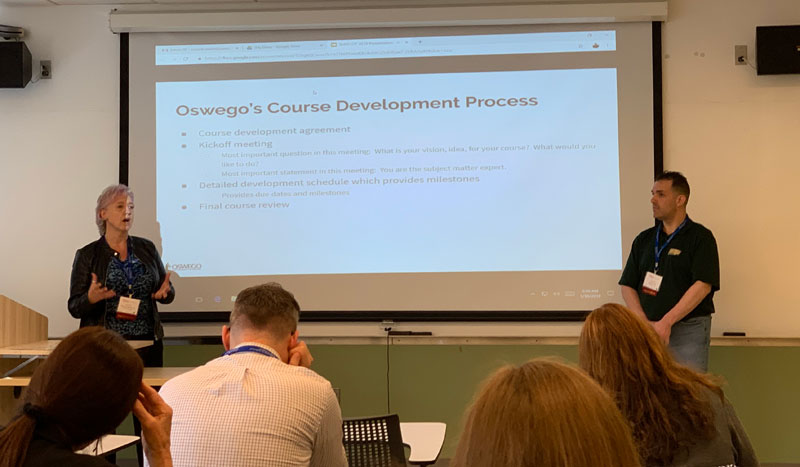Mikel Amigot | IBL News
The course development process usually tends to be too complex. As instructional designers, we schedule too many milestones and we overcomplicate things.
Two experts in the field shared their view at SUNY’s annual technology conference, CIT, which took part this May 29-31 in Purchase, New York.
Learning designers Joseph Stabb and Theresa Guillard-Cook [in the picture] described SUNY Oswego’s four-step process for course development: 1) Agreement; 2) Kickoff Meeting; 3) Schedule Set Up; 4) Final Course Review.
The second one is particularly critical. The most important questions in the meeting with professors are: “what is your vision and idea for your course? What would you like to do?” These obvious questions and answers are usually forgotten; consequently, the class becomes ineffective.
“The most important statement in this meeting is: you are the subject matter expert,” said Joseph Stabb and Theresa Guillard-Cook.
Regarding the third stage, a detailed development schedule with milestones and due dates is required. A template is necessary.
A well-defined process, based on continuous collaboration where faculty feel supported, will meet educational standards and drive student outcomes.

 En Español
En Español





















